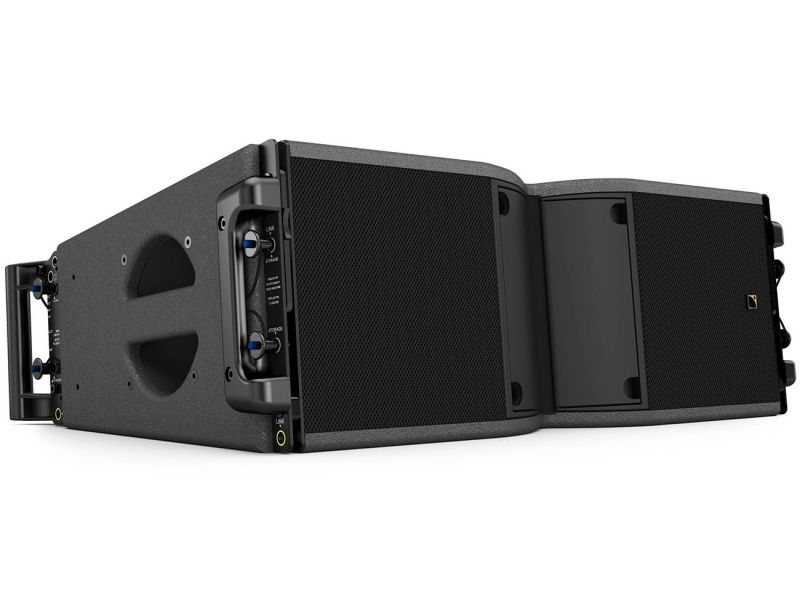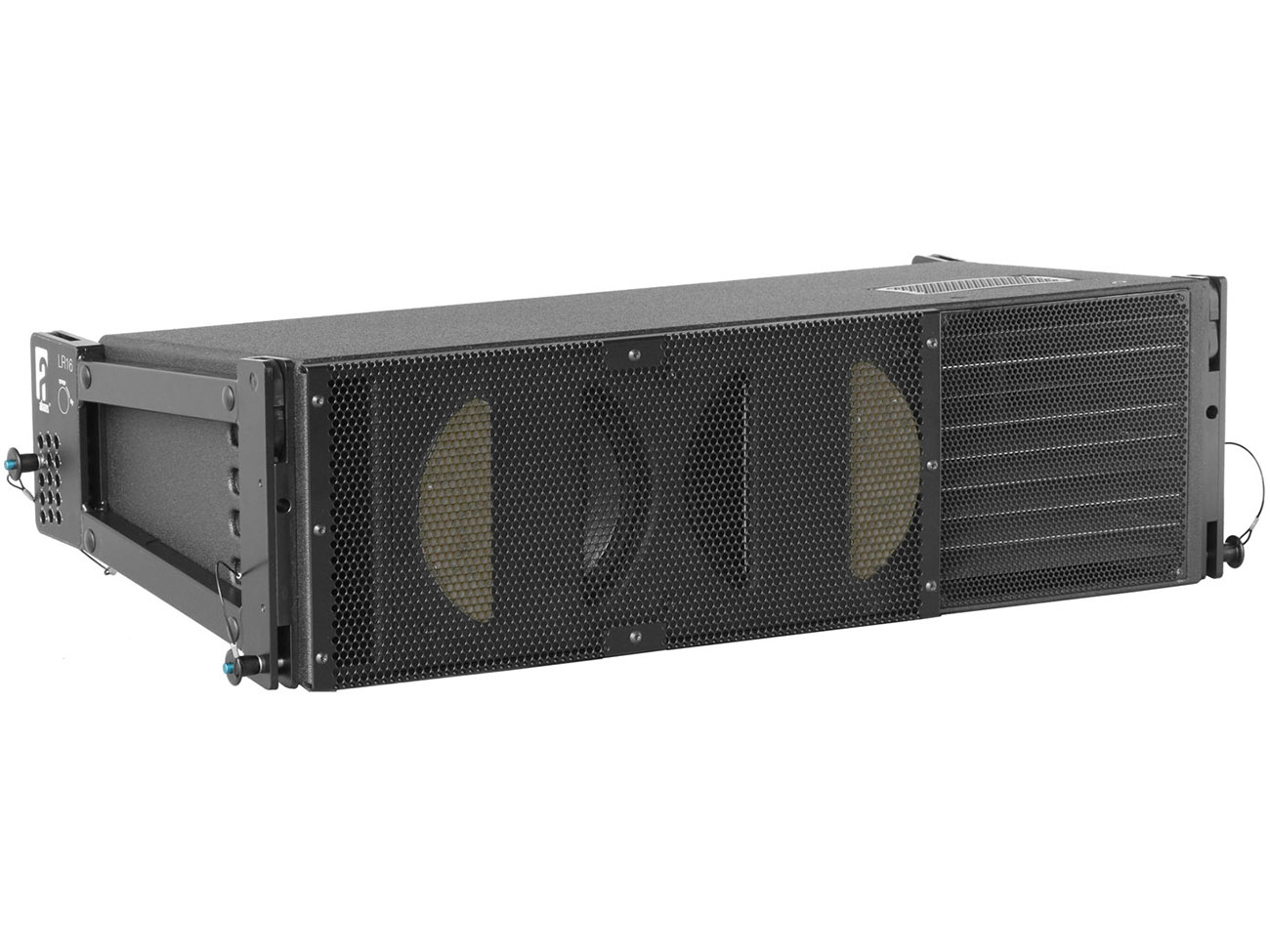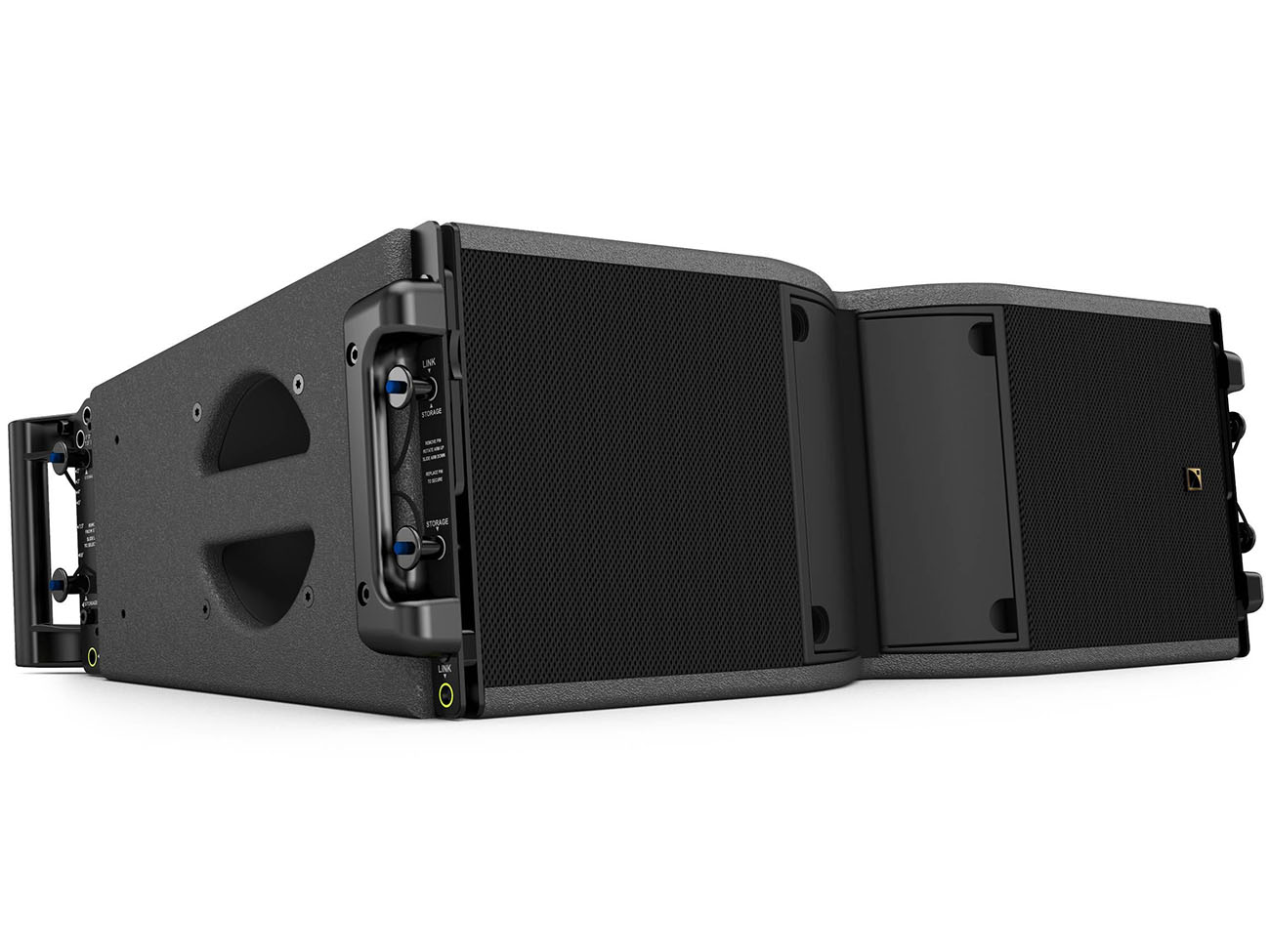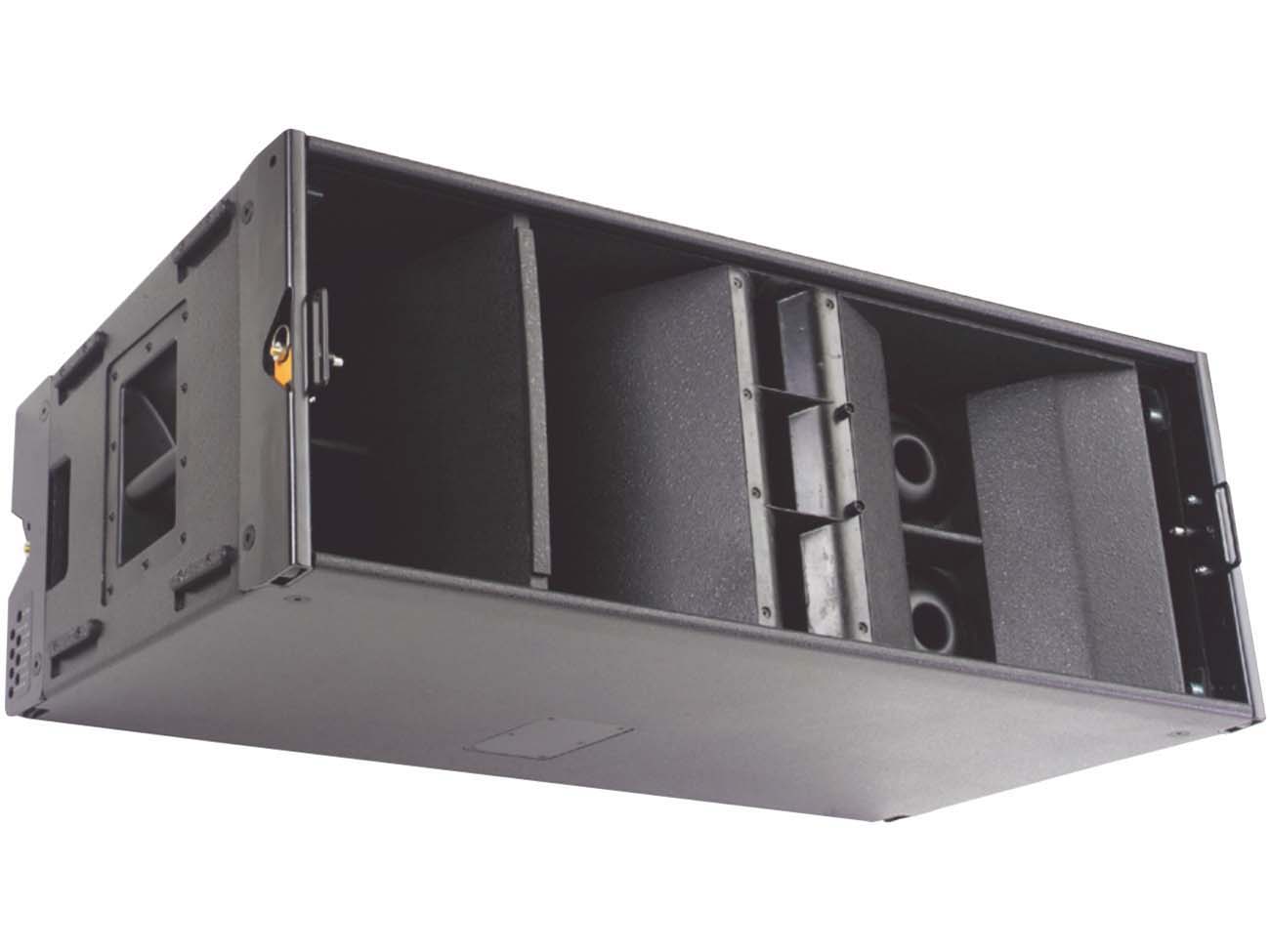Best line array system
25 October 2023

|
Are you looking to take your audio experience to new heights? Look no further than the power of sound unleashed by the best line array system. With its immersive audio capabilities, this cutting-edge technology allows you to feel the music as if you are part of the performance itself. The best line array system combines precision engineering, advanced acoustics, and state-of-the-art design to deliver unparalleled sound quality and clarity. Whether you're a music lover, event organizer, or sound engineer, this system is a game-changer for any audio-intensive application. Equipped with the latest advancements in sound reproduction, the best line array system ensures consistent, balanced coverage across any venue. From concert halls to stadiums, this system delivers a captivating audio experience for everyone in the audience. Not only does the best line array system deliver outstanding sound, but it also offers easy scalability and flexibility. With its modular design, you can easily customize the system to suit your specific requirements, making it an ideal choice for both small and large-scale events. How Line Array Systems Work Line array systems utilize a series of vertically stacked loudspeakers to create a seamless and uniform sound dispersion throughout a venue. The design of these systems allows for precise control over sound directionality and coverage, resulting in exceptional audio quality for both near and far listeners. At the core of a line array system are the individual loudspeaker elements, known as array elements or line array modules. These modules are typically housed in a rigid enclosure, each containing multiple drivers, including woofers, mid-range drivers, and tweeters. The sound produced by each driver is carefully engineered to blend seamlessly with the neighboring drivers, resulting in a coherent wavefront that travels in a straight line. By stacking multiple array elements vertically, the line array system projects sound over a longer distance while maintaining consistent coverage and tonal balance throughout the venue. To achieve optimal performance, line array systems often incorporate advanced signal processing technologies such as digital signal processors (DSPs). These DSPs help to correct any anomalies in the system's response, ensuring accurate sound reproduction and minimizing unwanted effects such as phase cancellation and comb filtering. In addition to the loudspeaker modules and signal processing, line array systems require careful configuration and setup. Rigging and aiming the loudspeaker arrays correctly is crucial to achieving the desired coverage pattern and maximizing the system's performance. This involves considering the venue's acoustics, audience seating arrangements, and other factors to ensure an immersive audio experience for everyone in attendance. |
 |
|
Benefits of Using Line Array Systems Line array systems offer a range of benefits that make them an attractive choice for audio professionals and enthusiasts alike. 1. Superior Sound Quality and Clarity One of the primary advantages of line array systems is their ability to deliver exceptional sound quality and clarity. By precisely controlling sound dispersion, these systems minimize reflections and unwanted interactions with the venue's surfaces, resulting in a more accurate and coherent audio reproduction. The consistent coverage provided by line arrays ensures that every listener experiences the same high-quality sound, regardless of their location within the venue. 2. Enhanced Coverage and Throw Distance Line array systems are designed to project sound over long distances without compromising sound quality. The vertical stacking of multiple loudspeaker modules allows for a more focused and controlled sound dispersion, enabling audio to reach far into the audience without losing intensity or clarity. This makes line arrays particularly suitable for large venues and outdoor events where coverage and throw distance are essential. 3. Scalability and Flexibility Another significant advantage of line array systems is their scalability and flexibility. With their modular design, these systems can be easily expanded or reconfigured to accommodate different venues and event requirements. Whether you need to cover a small intimate space or a massive stadium, line array systems can be adjusted to deliver optimal audio performance. 4. Improved Speech Intelligibility Line arrays are known for their ability to enhance speech intelligibility in challenging acoustic environments. By focusing sound directly towards the audience and minimizing reflections, these systems improve the clarity and articulation of spoken words. This is particularly crucial for conferences, presentations, and other events where speech intelligibility is paramount. 5. Aesthetically Pleasing Design Line array systems often feature sleek and visually appealing designs that seamlessly blend into various architectural and performance spaces. The slim profiles and discreet mounting options make them an attractive choice for venues where aesthetics play a significant role. |
 |
|
Types of Line Array Systems Line array systems come in various configurations and sizes to suit different applications and venues. Here are some common types of line array systems: 1. Compact Line Array Systems Compact line array systems are designed for smaller venues or events where space is limited. These systems typically feature smaller loudspeaker modules and offer a more focused sound dispersion. They are ideal for intimate concert settings, theaters, and corporate events. 2. Medium-Scale Line Array Systems Medium-scale line array systems strike a balance between compact and large-scale systems. They are suitable for mid-sized venues and events that require extended coverage and higher sound pressure levels. These systems often incorporate additional features such as integrated amplification and advanced DSPs. 3. Large-Scale Line Array Systems Large-scale line array systems are engineered to deliver powerful and immersive sound in vast arenas, stadiums, and outdoor festivals. These systems consist of larger and more powerful loudspeaker modules, capable of projecting sound over long distances while maintaining exceptional audio quality and coverage. 4. Steerable Line Array Systems Steerable line array systems offer advanced beam steering capabilities, allowing sound to be precisely directed to specific areas within a venue. These systems are particularly useful in venues with challenging acoustic environments or complex seating arrangements. By dynamically adjusting the beam direction, steerable line arrays can optimize sound coverage and minimize unwanted reflections. Top Line Array System Brands Several brands have established themselves as leaders in the line array system market, offering innovative and high-performance solutions. Here are some of the top brands to consider: 1. L-Acoustics L-Acoustics is renowned for its groundbreaking line array systems, used in some of the world's most iconic venues and events. Their systems are known for their exceptional sound quality, extensive coverage, and advanced technologies such as Wavefront Sculpture Technology (WST) and Panflex. L-Acoustics offers a range of line array solutions suitable for various applications and venue sizes. 2. Meyer Sound Meyer Sound has a long-standing reputation for delivering cutting-edge audio solutions, including line array systems. Their products are known for their exceptional clarity, precise coverage control, and robust build quality. Meyer Sound offers a range of line array systems suitable for applications ranging from theaters and houses of worship to large-scale concert venues. 3. d&b audiotechnik d&b audiotechnik is renowned for its innovative line array systems that combine exceptional sound quality with ease of use and flexibility. Their systems feature advanced technologies such as ArrayProcessing and Dynamic Directivity Control, allowing for precise sound optimization and consistent coverage. d&b audiotechnik offers a wide range of line array solutions suitable for various applications and venue sizes. 4. JBL Professional JBL Professional is a well-established name in the audio industry, offering a range of line array systems suitable for both fixed installations and live sound applications. Their line array systems are known for their reliability, versatility, and excellent performance. JBL Professional offers solutions that cater to a wide range of budgets and venue sizes. 5. Electro-Voice Electro-Voice is a trusted brand known for its high-quality audio products, including line array systems. Their line array systems offer exceptional sound quality, seamless coverage, and robust construction. Electro-Voice offers a range of line array solutions suitable for various applications, from small venues to large-scale events. When choosing a line array system, it is essential to consider factors such as your specific application requirements, venue size, budget, and the reputation and support provided by the manufacturer. Consulting with audio professionals and seeking recommendations can help you make an informed decision. Factors to Consider When Choosing a Line Array System selecting the best line array system for your needs requires careful consideration of several factors. Here are some key factors to keep in mind: 1. Application Requirements Consider the specific application requirements for your line array system. Are you primarily using it for concerts, live events, installations, or a combination of these? Different applications may require different system configurations and features. 2. Venue Size and Acoustics The size and acoustics of your venue play a crucial role in determining the appropriate line array system. Larger venues may require more powerful and larger-scale systems to ensure adequate coverage and sound pressure levels. Additionally, venues with challenging acoustics may benefit from line array systems with advanced beam steering capabilities or sound optimization technologies. 3. Budget Establish a budget for your line array system, considering both the initial purchase cost and any ongoing maintenance or operational expenses. It is important to strike a balance between your budget and the desired audio performance and features. 4. Manufacturer's Reputation and Support Research the reputation and support provided by the line array system manufacturer. Consider factors such as the company's track record, customer reviews, and the availability of technical support and after-sales service. A reputable manufacturer with a strong support network can provide peace of mind and ensure a smooth experience throughout the lifespan of your line array system. 5. System Integration and Compatibility Consider the integration and compatibility of the line array system with other audio equipment and technologies. Ensure that the system can seamlessly integrate with your existing infrastructure, such as mixing consoles, amplifiers, and signal processing equipment. Compatibility with industry-standard protocols and networking options can also simplify system setup and operation. Setting Up a Line Array System for Optimal Performance To achieve optimal performance from your line array system, proper setup and configuration are crucial. Here are some essential steps to consider: 1. Venue Assessment and System Design Begin by assessing the venue's acoustics, seating arrangements, and other factors that may impact sound quality and coverage. This assessment will help determine the appropriate line array system configuration and placement. Work with an experienced audio professional or system designer to create a detailed system design that takes into account the venue's unique characteristics. The system design should consider factors such as array height, aiming angles, and the number and placement of loudspeaker modules. 2. Rigging and Aiming Proper rigging and aiming of the line array system are essential for achieving the desired coverage and sound dispersion. Ensure that the loudspeaker arrays are securely rigged and properly aligned to deliver sound to the intended areas within the venue. Follow the manufacturer's recommendations and safety guidelines for rigging and flying the line array system. Consider factors such as load capacity, rigging hardware, and any safety regulations specific to your region. 3. System Calibration and Optimization Once the line array system is rigged and aimed, perform system calibration and optimization to ensure optimal audio performance. This process may involve using advanced measurement tools and software to adjust frequency response, time alignment, and coverage consistency. Consider employing a professional audio technician or system engineer with experience in line array system calibration. Their expertise will help fine-tune the system for optimal sound quality and coverage. 4. Testing and Fine-Tuning Conduct thorough testing and fine-tuning of the line array system before the actual event or performance. This includes checking for any potential issues, such as phase cancellation or frequency response irregularities, and addressing them accordingly. Test the system with various audio sources and evaluate its performance from different listening positions within the venue. Fine-tune the system's parameters as necessary to achieve the desired sound quality and coverage. Conclusion Unleash the power of sound with the best line array system for immersive audio. This advanced technology offers unparalleled sound quality, coverage, and flexibility, making it an ideal choice for various applications and venues. Whether you're a music lover, event organizer, or sound engineer, line array systems provide a transformative audio experience. With precision engineering, advanced acoustics, and state-of-the-art design, these systems allow you to feel the music as if you are part of the performance itself. Consider factors such as your specific application requirements, venue size, budget, and the reputation of the manufacturer when choosing a line array system. Collaborate with audio professionals and seek recommendations to ensure the best possible system for your needs. Proper setup and configuration are crucial for achieving optimal performance from your line array system. Follow the steps outlined in this article, including venue assessment, rigging and aiming, system calibration, and testing, to ensure an immersive audio experience for your audience. Unleash the power of sound with the best line array system and elevate your audio experience to new heights. Whether you're attending a concert, organizing an event, or working behind the scenes, the best line array system is your gateway to immersive audio bliss. |
 |
